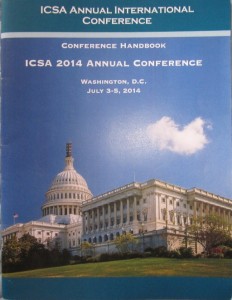As I go through different information sources, there are several questions which are constantly in the back of my mind. A few have to deal with the process of recruitment into and exit out of a high-demand faith group. It would be unwise to assume that the path I took into such a group is the only way into these groups; or that there are only certain types of folks who join such groups. I am convinced of the fact that each group of this type uses a form of deception in order to recruit. In light of that, anyone can be recruited as anyone can be deceived within the right circumstances. That is how magic works. In many ways the deception used by high-demand faith groups is like a magic show. At least initially, the illusion is the primary focus, not the mechanics of how the illusion was set-up. Visitors to the group I was a part of – Word of Faith Fellowship (WOFF) had no idea how purposeful and practiced the created illusion had become. Any person who comes in contact with a magic show such as WOFF- could be fooled.
Aside from that aspect, are there any particular groups of folks that may be more susceptible to the illusion presented by control groups? Recently, I found two sources which were written about two different types of control groups which were suggesting the same answer to this question. It struck me as crucial and an important insight. After we review these sources, I will apply this understanding as a possible explanation to the recent trend I have heard about WOFF.
“Unholy Devotion – Why Cults Lure Christians” written by Harold L. Bissell (Copyright©1983 by The Zondervan Corp. ISBN 0-310-37251-8) is the first resource I will use. The author draws from his experience in counseling those who were drawn into religious cults. At the time he authored this book, he served as the Dean of Chapel at Gordon College.
In Chapter 2- “But You Can See the Love in Their Faces”- He warns about an over “emphasis on the subjective religious experience” can cause folks to “confuse Evangelicals with other “radical” religious groups who also exhibit changed lives, testimonies of joy, smiling face, and evangelistic zeal.” (page 19)
Continue reading Who Joins? Who Leaves?

